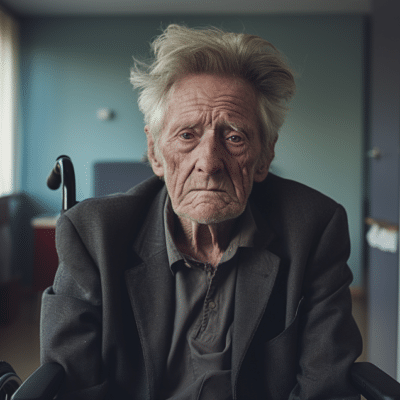Nestled in the heart of Nassau County, Garden City stands as a picturesque emblem of New York’s suburban harmony. However, beneath this idyllic façade lies an increasingly worrying issue that often goes undetected – nursing home abuse.
As heartbreaking as it is unimaginable, elder mistreatment threatens to overshadow the serene environment of the city. This blog aims to raise resident awareness around this critical topic and initiate open discussions about protecting our most vulnerable community members.
In the caring labyrinth of assisted living facilities, where elders should be resting securely under diligent supervision, some find themselves facing neglect or, even worse, abuse.
IMAGE: OPTICOUS
This blatant violation shatters their dignity and severely harms them physically and emotionally. If you or a loved one faced abuse in a care facility, you could be entitled to nursing home abuse compensation. But the first step is to identify the abuse and step in.
To provide context, this blog dives into what constitutes nursing home abuse or neglect, how it can occur within such institutions, and ways to protect vulnerable adults from harm.
Defining Nursing Home Abuse
There are two main categories of nursing home abuse: intentional acts and acts resulting from negligence or incompetence. Intentional examples of mistreatment involve physical violence, such as slapping or hitting residents.
They also include intimidation tactics that aim to cause mental anguish. Negligence examples, however, consist of failing to provide clean bedding, withholding food or water beyond physician-prescribed fasting times, and neglecting to address rotting teeth until they fall out.
Why Abuse Happens In Nursing Homes
While several factors can contribute to these troubling circumstances, one aspect is understaffed institutions. These institutions often hire inexperienced workers who need more training.
As a result, their ability to safely administer healthcare treatment options approved by supervisors but unauthorized for specific patients is impacted. This increases the potential for drug interactions with consequences worse than legal action against providers.
When caretakers have insufficient resources (like PPE) to prevent staff from spreading the COVID-19 virus (another neglected area), handling extreme situations becomes difficult, leading them to exploitation instead. Care-receiving facility location also plays a role in determining whether opportunities exist to make money by lining pockets, embezzlement scams, etc.
Signs Of Neglect Or Abuse
Elders whose caretakers are neglecting or abusing them display various evident symptoms. Examples include untreated bedsores and pressure ulcers, physical restraints producing bruises and marks around the wrists, and unexplained fractures.
These injuries are often attributed to stumbling or falling in high-risk areas and not receiving sufficient assistance to stand up properly. The staff’s fearful interactions raise questions about the existence of rules.
Recognizing the signs of elder abuse and taking proactive steps to address and prevent mistreatment is crucial to ensuring the safety and well-being of vulnerable individuals in care settings.
Workplace environment where quality care outcomes or products replaced unsatisfactory ones under cost constraints. The expression of hostile feelings during the visit, unanticipated events elsewhere, and the lack of transparency regarding health records and testing raise a red flag.
Protecting Vulnerable Elders
The most effective means for safeguarding vulnerable adults against nursing home abuse involves taking an active role—both monitoring routines and reporting all irregularities—during the patient’s stay at the facility.
Most states have persons tasked with visiting these institutions and randomly checking on residents’ welfare; confidentiality is guaranteed if requested. Other measures include the installation of surveillance cameras in common access areas and the replacement of older security protocols like keys.
Additionally, some other measures include increasing screening process scrutiny during hiring, performing background checks, and transferring a loved one somewhere else better equipped to evaluate capabilities.
Legal Options
When patients in long-term care facilities face neglect, they should have swift access to justice. The facility that unfairly burdened the elderly person made reasonable precautions to preserve their safety, but the case is typically handled outside criminal court. Some lawyers have focused on elder law, handling matters including workers’ compensation, malpractice, and abuse in violation of legal guidelines.
Conclusion
Nursing home abuse and neglect pose a real threat to America’s seniors. As such, we must collectively work together to create safe environments inside elder-care facilities nationwide, encouraging transparency and an ongoing sense of responsibility while watching healthcare service provider’s negligence.
Our aging parents and grandparents deserve respect while living life with the fullest dignity possible, and we must make sure doing our part allows independent sovereignty in the late stages as much as possible.
IMAGE: OPTICOUS
If you are interested in even more lifestyle-related articles and information from us here at Bit Rebels, then we have a lot to choose from.


COMMENTS